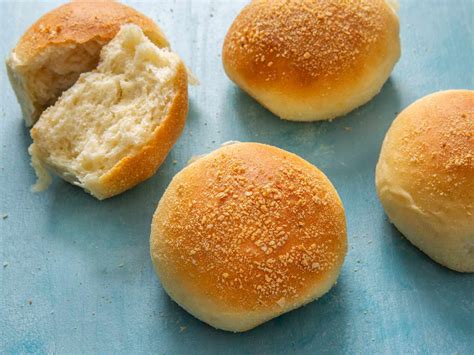The Ultimate Guide to Making Delicious Filipino Pandesal
Pandesal. Just the name itself conjures images of soft, pillowy bread, perfect for dipping in coffee or enjoying on its own. This iconic Filipino bread is a breakfast staple, a beloved snack, and a symbol of Filipino culture. If you've ever wondered how to make this delightful treat at home, you're in the right place! This comprehensive guide will walk you through each step, ensuring your pandesal turns out perfectly fluffy and delicious every time.
Understanding the Ingredients: The Key to Perfect Pandesal
The magic of pandesal lies in its ingredients and the process. Let's break down the key players:
Flour: The Foundation of Your Pandesal
High-protein bread flour is crucial for achieving that signature soft and slightly chewy texture. Don't substitute all-purpose flour, as it lacks the gluten development necessary for a proper rise.
Yeast: The Rising Star
Active dry yeast is the leavening agent, giving your pandesal its airy texture. Ensure your yeast is fresh – its activity is essential for a successful bake. Look for an expiration date and check for any visible signs of clumping or discoloration.
Sugar and Salt: Balancing the Flavors
Sugar adds sweetness and helps feed the yeast, contributing to a better rise. Salt balances the sweetness and enhances the overall flavor profile.
Milk and Water: Hydration is Key
Milk contributes richness and flavor. A combination of milk and water provides the optimal hydration level for the dough, resulting in the perfect texture. Warm liquid activates the yeast effectively.
Butter/Margarine: Enhancing Flavor and Texture
A touch of butter or margarine adds richness and softness, creating a melt-in-your-mouth texture.
Bread Improver (Optional): Boosting the Rise
While not strictly necessary, bread improver can help strengthen the gluten structure, resulting in a better rise and softer crumb.
Step-by-Step Pandesal Recipe: From Dough to Delight
Now for the fun part – making your own pandesal! This recipe provides clear instructions for achieving perfect results.
Ingredients:
- 500g bread flour
- 7g active dry yeast
- 50g sugar
- 10g salt
- 200ml warm milk
- 100ml warm water
- 50g butter/margarine (softened)
- Egg wash (for brushing)
- Sesame seeds (for topping, optional)
Instructions:
-
Activate the Yeast: In a large bowl, combine the warm milk, warm water, and sugar. Sprinkle the yeast over the mixture and let it stand for about 5-10 minutes until foamy. This confirms your yeast is alive and active.
-
Combine Dry Ingredients: In a separate bowl, whisk together the flour and salt.
-
Combine Wet and Dry: Gradually add the dry ingredients to the yeast mixture, mixing until a shaggy dough forms.
-
Knead the Dough: Turn the dough out onto a lightly floured surface and knead for 8-10 minutes, or until the dough becomes smooth and elastic. Add the softened butter/margarine during the last 5 minutes of kneading.
-
First Rise (Bulk Fermentation): Place the dough in a lightly oiled bowl, turning to coat. Cover with plastic wrap and let it rise in a warm place for about 1-1.5 hours, or until doubled in size.
-
Shape the Pandesal: Punch down the dough to release the air. Divide the dough into 30-35g portions. Shape each portion into a smooth ball.
-
Second Rise (Proofing): Place the shaped pandesal on a baking sheet lined with parchment paper. Cover loosely with plastic wrap and let them rise for another 30-45 minutes, or until almost doubled in size.
-
Egg Wash and Sesame Seeds: Brush the risen pandesal with egg wash and sprinkle with sesame seeds (optional).
-
Bake: Bake in a preheated oven at 375°F (190°C) for 15-20 minutes, or until golden brown.
-
Cool and Enjoy: Let the pandesal cool completely on a wire rack before serving.
Tips for Pandesal Perfection
- Use fresh ingredients: Fresh yeast and high-quality flour are key to success.
- Don't over-knead: Over-kneading can result in tough bread.
- Monitor the rising time: Rising times may vary depending on the ambient temperature.
- Adjust baking time: Oven temperatures can vary, so keep an eye on your pandesal while it's baking.
Serving Suggestions: Beyond the Basic
While delicious on its own, pandesal pairs perfectly with:
- Coffee: A classic Filipino breakfast combination.
- Chocolate: A sweet and satisfying treat.
- Cheese: Add a savory element to your pandesal.
- Spread: Enjoy with your favorite jams or butter.
With this comprehensive guide, you're well on your way to baking delicious, authentic Filipino pandesal at home. Happy baking!
